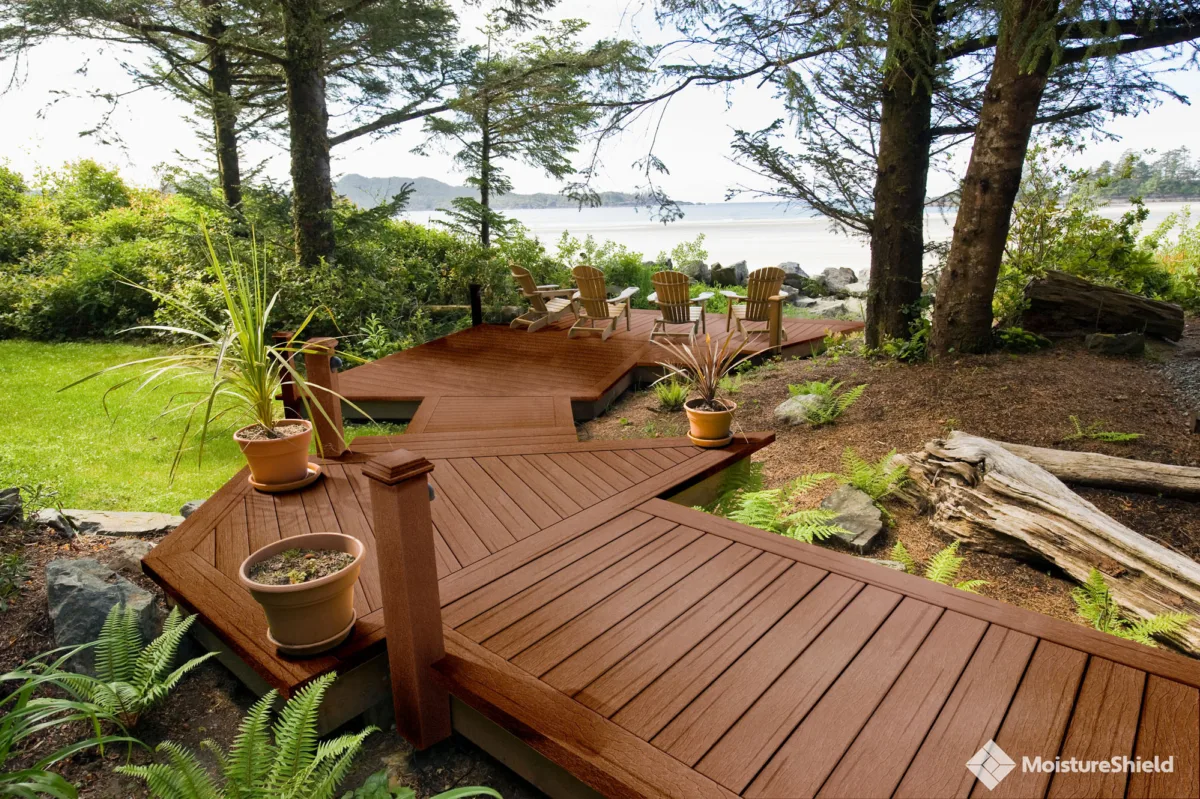When it comes to backyard lounging, few things rival sunset-watching from the privacy of your deck. Traditional decks are constructed with wood planks, but composite decking is quickly gaining traction as a favoured alternative. Many builders and consumers were initially wary when composite decking first arrived, but over the years, its quality, durability, and appearance have only improved.
What is Composite Decking?
Composite decking does contain wood, but it's not the same as traditional wooden decks. Composite decking is a manufactured building product created with a mix of wood fibres, plastics, and binding agents. It's considered relatively environmentally friendly since the materials used, like milk jugs and salvaged fibres, are recycled and don't use harmful chemicals. The plastic in composite decking also makes it quite durable: it's more resistant to rot, moisture, and insects than traditional wooden decks. Composite decking doesn't need to be stained or painted to prevent cracking or warping, and it's more resistant to water damage than traditional decking. Composite is now the fastest growing wood deck alternative on the market, thanks in part to its minimum guaranteed lifespan of 15 to 25 years.
Built for All Climates
Composite decking is built to last in many different climates, including extreme heat and cold. Like wood decks, composite decking can feel warm to the touch, but with the addition of MoistureShield's CoolDecking technology, retained heat can be reduced by 35 per cent. Composite decking can also easily hold the weight of over 3ft of snow. Year after year, composite decks will continue to look like new, no matter the weather.
Pros and Cons of Composite Decking
While wood decks are naturally beautiful and add character to a backyard or dock, they're not always the sustainable choice. It's common for homeowners to rebuild their deck after it is damaged or appears run-down. Composite decking, though, solves many of the problems that come with wood decks.
Pros
- Decreased maintenance
- Increased durability & lifespan
- Minimal fading
- Suitable for all climates
Cons
- High initial cost
- Easily scuffed
- Prone to staining
Composite's high initial cost can be intimidating for homeowners, but the investment can be worthwhile when considering the maintenance that wooden decks require. Composite decking appearance isn't a con, either. Much like real wood planks, composite deck planks come in a variety of colours.
Types of Composite Decking
There are two different types of composite decking: capped and uncapped. Capped decking has a plastic coating to protect the boards from staining and fading. Uncapped decking doesn't come with this protective coating, and is the more affordable of the two. Those looking to save on upfront costs often choose uncapped, though capped decking does reduce future maintenance costs.
Getting Started
If you're already considering your next deck project, look into wood alternatives like composite decking. Browse Doman's product catalogue to find the right materials for you. For any product inquiries, contact the nearest distribution centre to find a retailer in your area.
